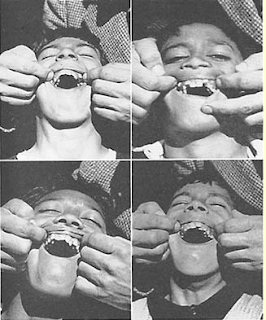The photos below show Doug Miller and his wife, Stephanie Miller. Doug is one of the most successful natural bodybuilders in the U.S.A. today. He is also a manager at an economics consulting firm and an entrepreneur. As if these were not enough, now he can add book author to his list of accomplishments. His book,
Biology for Bodybuilders, has just been published.
(Source: www.dougmillerpro.com)
Doug studied biochemistry, molecular biology, and economics at the undergraduate level. His co-authors are Glenn Ellmers and Kevin Fontaine. Glenn is a regular commenter on this blog, a professional writer, and a certified Strength and Conditioning Specialist. Dr. Fontaine is an Associate Professor at the Johns Hopkins University’s School of Medicine and Bloomberg School of Public Health.
Biology for Bodybuilders is written in the first person by Doug, which is one of the appealing aspects of the book. This also allows Doug to say that his co-authors disagree with him sometimes, even as he outlines what works for him. Both Glenn and Kevin are described as following Paleolithic dieting approaches. Doug follows a more old school bodybuilding approach to dieting – e.g., he eats grains, and has multiple balanced meals everyday.
This relaxed approach to team writing neutralizes criticism from those who do not agree with Doug, at least to a certain extent. Maybe it was done on purpose; a smart idea. For example, I do not agree with everything Doug says in the book, but neither do Doug’s co-authors, by his own admission. Still, one thing we all have to agree with – from a competitive sports perspective, no one can question success.
At less than 120 pages, the book is certainly not encyclopedic, but it is quite packed with details about human physiology and metabolism for a book of this size. The scientific details are delivered in a direct and simple manner, through what I would describe as very good writing.
Doug has interesting ideas on how to push his limits as a bodybuilder. For example, he likes to train for muscle hypertrophy at around 20-30 lbs above his contest weight. Also, he likes to exercise at high repetition ranges, which many believe is not optimal for muscle growth. He does that even for mass building exercises, such as the deadlift. In
this video he deadlifts 405 lbs for 27 repetitions.
Here it is important to point out that whether one is working out in the anaerobic range, which is where muscle hypertrophy tends to be maximized, is defined not by the number of repetitions but by the number of seconds a muscle group is placed under stress. The anaerobic range goes from around 20 to 120 seconds. If one does many repetitions, but does them fast, he or she will be in the anaerobic range. Incidentally, this is the range of strength training at which glycogen depletion is maximized.
I am not a bodybuilder, nor do I plan on becoming one, but I do admire athletes that excel in narrow sports. Also, I strongly believe in the health-promoting effects of moderate glycogen-depleting exercise, which includes strength training and sprints. Perhaps what top athletes like Doug do is not exactly optimal for long-term health, but it certainly beats sedentary behavior hands down. Or maybe top athletes will live long and healthy lives because the genetic makeup that allows them to be successful athletes is also conducive to great health.
In this respect, however, Doug is one of the people who have gotten the closest to convincing me that genes do not influence so much what one can achieve as a bodybuilder. In the book he shows a photo of himself at age 18, when he apparently weighed not much more than 135 lbs. Now, in his early 30s, he weighs 210-225 lbs during the offseason, at a height of 5'9". He has achieved this without taking steroids. Maybe he is a good example of
compensatory adaptation, where obstacles lead to success.
If you are interested in natural bodybuilding, and/or the biology behind it, this book is highly recommended!


